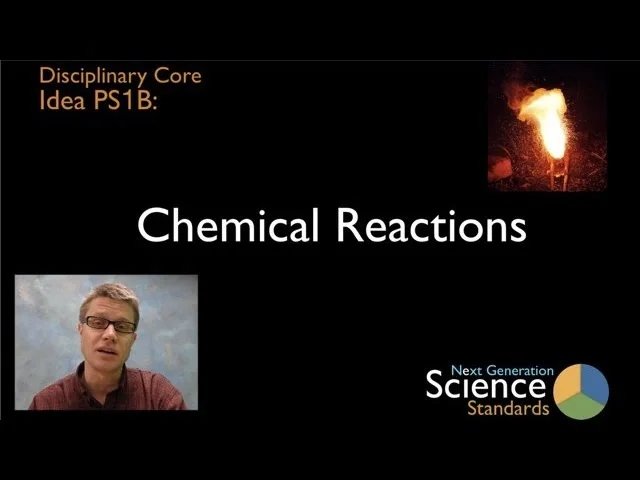PS1.B: Chemical Reactions
In this video Paul Andersen explains how chemical reactions progress as bonds are broken and reformed reformed. He explains the difference between changes in state and changes in molecules. He discussed collision theory and explains why increases in temperature and concentration can increase reaction rates. He also discusses the conservation of matter in chemical reactions. The video also contains a teaching progression for chemical reactions from grades K-12.
PS1.A: Structure and Properties of Matter
In the first physical science video for the Next Generation Science Standards Paul Andersen explains the structure and properties of matter. He starts by explaining how all matter is made of about 100 smaller particles called matter. He explains a teaching progression for introducing the topic of matter K-12. This begins with a brief introduction to substances that can be scientifically observed at many levels. This eventually builds through molecules and pure substances to the subatomic structure of atoms and the importance of binding energy.
CCC1: Patterns
Paul Andersen explains patterns and describes why pattern recognition is an important skill in science and engineering. He begins by discussing patterns in nature, including snowflakes, flower petals, seasons and nucleotides in DNA. He then illustrates the importance of classification in describing and eventually understanding patterns. He gives a progression instruction in the science classroom from grade K to 12. A secret pattern is hidden within the video.
SEP6: Constructing Explanations and Designing Solutions
Paul Andersen explains how scientists modify theories by constructing explanations. He also discusses the cycle of design used by engineers to solve problems. He starts by defining a theory as a well-established explanation of a phenomenon that is refined over time. Examples discussed in the video include the big bang theory, the germ theory and the theory of natural selection. He also lays out a progression for building this skill in students.




